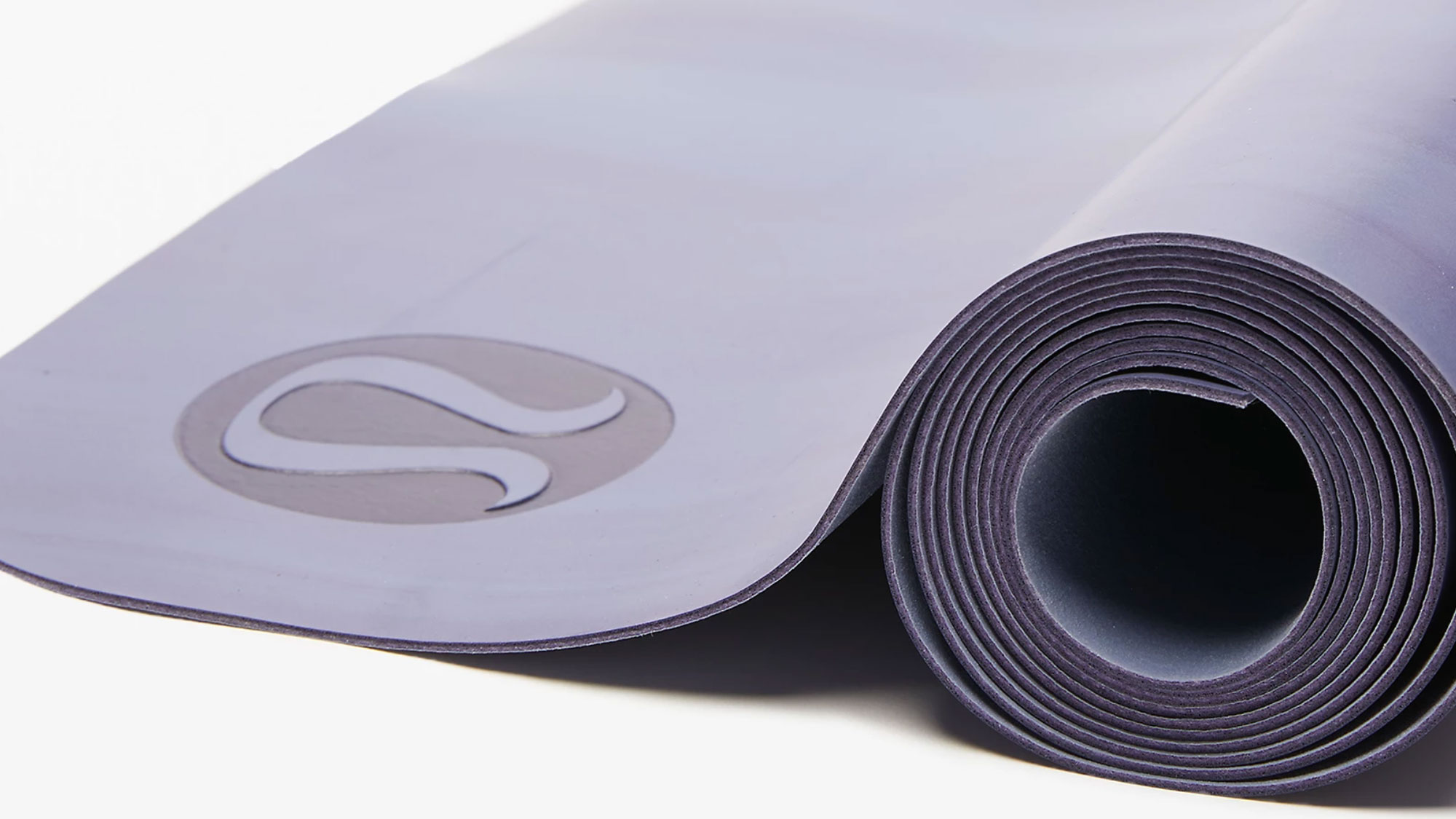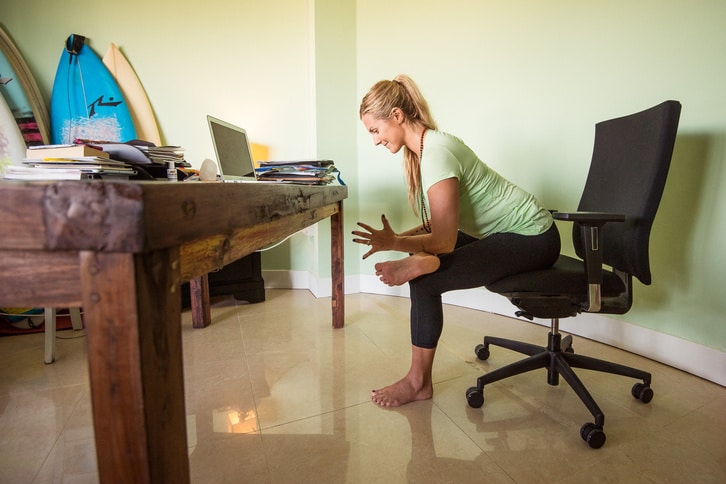
Menstruation-yoga focuses on yoga postures that may help alleviate pelvic pain. Standing straight up, feet should extend to the sides and hands should be positioned behind the back. The torso should arch, the pelvic area should be forward, the neck should be slightly bent, and the neck should be slightly rolled inward. If your neck is not straight, you can hold the pose while your palms are pressed together. Interlock your fingers and not touch them.
The balasana is good for relieving pain and discomfort. For women suffering from backache, this pose can be especially helpful. It also helps the body relax. Pregnant women, people with knee problems, or those suffering from diarrhea should avoid it. The top thighs should be turned inwards. After performing the asana, relax your back. You should stay in this position for no less than 30 seconds.

The apana, also known as inversion, is a very common yoga pose during menstruation. This movement encourages blood to flow from your vagina towards your Fallopian tubes. Inversions reduce retrograde blood flow. Retrograde menstruation can lead to severe endometriosis. The symptoms of endometriosis may be less severe in women who are regular practitioners of this posture than in those who don't.
Ardha Chandrasana (or Ardha Chandrasana) is another yoga position that relieves menstrual cramps. This posture helps to stretch the abdominal region and decreases cramps. You can perform it with your legs straightened or while standing. This pose may be uncomfortable, but it is safe for your period. This yoga move can reduce stress, anxiety, mild depression, and other symptoms. These are some of the many benefits you get from this exercise.
Women can suffer from the inversions of menstruation yoga. Practicing them during this time can increase the risk of developing endometriosis, which is a condition where endometrial tissue grows on the body. Inversions could also lead to vascular congestion when there is more flow. These side effects can be avoided by women who invert during periods. This practice is good for a woman’s overall health as well as her groin.

Yoga poses can be helpful for women suffering from cramps during menstruation. This pose can also be beneficial to women with back pain. This pose is not recommended for women who are pregnant, but it can be helpful for women who are pregnant. The most commonly used position for menstruation in the reclining twist. It is comfortable and convenient for nursing women as well as pregnant women. It can improve the quality of life for women who are going through menstruation.
Dandasana is the best menstruation yoga posture. The woman must sit on her heels, with her left leg against her thigh. To firm her pelvic area she then bends her back and twists her torso. Then, she allows her head to touch the left knee. She can also hold onto her toes with her hands by bending at her elbows.
FAQ
Which is the best order to exercise?
It all depends upon what you are trying to achieve. To build muscle mass, you should first lift heavy weights. Then move into cardio. You can then go to strength training if your goal is to lose weight.
Cardio is a great way to lose fat if you are just looking for a quick workout. After that, you can add strength training.
If you are looking for muscle mass, cardio should be your last option. Cardio stimulates growth hormones and helps build muscle mass.
Eat before you go to the gym. This will give your muscles more fuel, so they work harder. Plus, it makes you feel better during your workout.
Which workout is best to build muscle?
There are two major exercises that you should do when you want to build muscle mass. These are called compound movements and isolation. Isolation exercises target particular muscles, while compound movements focus more on several groups at once.
Choose exercises that test all your major muscle groups to improve your workouts. This ensures that your sessions are challenging and you are always working hard.
To keep track of what you have done, use an app called MyFitnessPal. It lets you log everything from calories burned and weight lifting. You can even create customized meal plans that are based on your goals.
How to build muscles quickly
The best way to quickly build muscle is to eat healthy and exercise regularly.
It is best to exercise in the morning, when you feel fresh and ready to go!
Try exercises like squats and bench presses.
Use different weight training techniques and drink plenty water throughout the day.
Statistics
- 10 pounds in a month is likely during a lean bulking phase, especially for beginners. (muscleandstrength.com)
- Cardmembers earn 5% Back at Amazon.com with a Prime Credit Card. (amazon.com)
- Candidates and applicants must pass all four tests at 70% (minimum level) to graduate from Basic Deputy U.S. Marshal (BDUSM) Training. (usmarshals.gov)
- According to the American Academy of Dermatology (AAD), men over 50 are at a heightened risk of developing it. (healthline.com)
- The PRS enabled risk stratification for overall prostate cancer and lethal disease with a four-fold difference between men in the highest and lowest quartiles (HR, 4.32; 95% confidence interval [CI], 3.16-5.89). (pubmed.ncbi.nlm.nih.gov)
External Links
How To
How do I lose fat by exercising?
Exercise burns calories through increased metabolism and oxygen consumption.
At moderate intensity, you will lose weight easily.
These are some tips to help you lose fat while working out:
-
Do cardio exercises such as walking, swimming, jogging, cycling, running, or elliptical training.
-
Three times per week, exercise for 30 minutes.
-
You can add strength training into your exercise routine if you're looking to lose even more weight.
-
Avoid intense workouts. You can build muscle and not break down muscle tissue.
-
Hydrate well during exercise. Water helps to flush out toxins from the body and maintains proper hydration.
-
After working out, make sure to drink low-fat proteins shakes. Protein shakes are great for your muscles and energy.
-
Take smaller meals throughout each day to avoid feeling hungry.
-
Don't skip breakfast! Skipping breakfast can leave you feeling tired and sluggish.
-
Take care of yourself mentally. Stressful situations may slow down your metabolism.
-
Keep a positive attitude. Studies show that people who believe they're overweight gain more weight than those who think they look pleasing.
-
Get enough sleep. Lack of sleep makes it harder to burn fat.
-
Be active. Make sure you get up and move every hour.
-
Maintain a healthy diet. Eat right to feel satisfied and full for longer.
-
Find relaxation techniques. Tenseness can cause stress hormones to break down muscle tissue.
A balanced diet provides all the nutrients necessary for growth and development.
Instead of eating three large meals a day, eat six smaller meals every day. This allows your body time to digest what you've eaten.
Calcium is required to support strong bones. Calcium is available in dairy products like milk, yogurt, fortified soy beverages, orange juice, cereal, bread, and cereals.
Calcium is found in green leafy vegetables, beans, tofu, seeds, nuts, and cheese.
Vitamin D is required for calcium absorption. Vitamin D is found in eggs yolk, fatty fish and fortified foods.
Vitamin E is vital for your skin's health. It can be found as a vegetable oil, wheat germ, peanuts or almonds.
Your body needs zinc to maintain normal immune function and heal wounds. Zinc can also be found in legumes, oysters, meats and whole grains.
Zinc deficiencies can lead to fatigue, decreased appetite, depression, and reduced immunity.
Too much sugar leads to insulin resistance. This results in higher blood glucose levels. Insulin resistance causes weight gain.
Insulin resistance occurs when the bloodstream is full of free radicals. Free radicals refer to molecules that contain unpaired electrons. They can damage cell membranes and other body parts.
Most free radicals come from pesticides herbicides, food additives, preservatives smoking, radiation, chemical in cosmetics, lotions and household cleaning supplies.
Free radical damage may lead to cancer, heart disease diabetes, arthritis, asthma and other conditions.
Eating a well-balanced diet with antioxidants is the best way to prevent free radical damage. Antioxidants protect against oxidative damage.
Vitamin C is found in citrus fruits and beta carotene is found in carrots.
Selenium, copper as well as manganese and zinc are some other antioxidant nutrients.
Selenium is known to protect cells from the oxidative damage that free radicals can cause. Selenium may be found in Brazil nuts as well tuna, liver and kidneys. It can also be found on shrimp, cod, turkey, beef lamb, pork, chicken, and other foods.
Copper protects the brain, eyes, lungs, and red blood cells. Copper can be found in shellfish and poultry as well as meat and organ meats.
Manganese, an essential component of bone strength, is crucial. Manganese can be found in brown rice and spinach as well as bananas, prunes raisins, oatmeal, lentils, and oatmeal.
Zinc is required for normal growth, reproduction and wound healing. Zn is found in lean cuts of meat, white fish, poultry, and eggs.